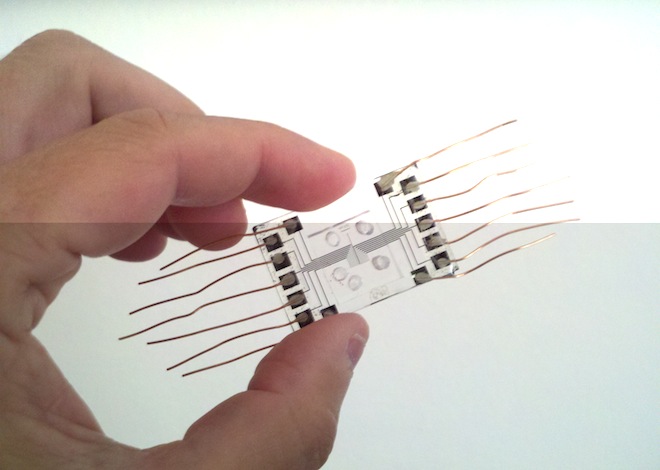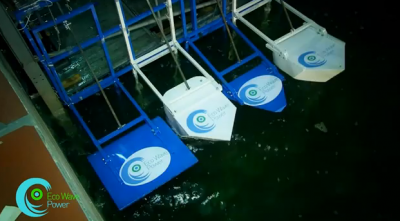Water scarcity is probably the most pressing environmental concern in the Middle East region and current desalination technologies are too costly and energy-intensive to rely on as a sustainable solution. But a new nano “water chip” that uses the power of a store-bought battery holds promise.
Researchers from the University of Texas at Austin and the University of Marburg in Germany sought to develop a method of removing salt from water that did not require a membrane. That was the first priority, since membranes used in current desalination plants is prone to contamination.
Secondly, they wanted to reduce the energy-intensity associated with reverse osmosis and other common desalination methods and they wanted a system that would be affordable for just about anyone living near salt or brackish water.
The research team worked with Okeanos Technologies, a small startup created to first develop and then finally distribute the technology.
“People are dying because of a lack of freshwater,” said Tony Frudakis, founder and CEO of Okeanos. “And they’ll continue to do so until there is some kind of breakthrough, and that is what we are hoping our technology will represent.”
Called electrochemically mediated seawater desalination, the technology uses a water-filled plastic chip that has two branches or pathways. A small electric charge is applied to the chip, neutralizing chloride ions and creating an ion depletion zone, and fresh water is diverted to one channel while the salts are pushed out of the other.
“Like a troll at the foot of the bridge, the ion depletion zone prevents salt from passing through, resulting in the production of freshwater,” the researchers wrote in a press statement.
Currently the technology is only about 25 percent efficient and produces nano liters, which isn’t going to save anyone anytime soon, but that doesn’t trouble the scientists at all.
They are encouraged that their proof of concept was successful, and are now looking at ways to improve the technology, and then to scale it up.
“This was a proof of principle,” said Kyle Knust, a graduate student who worked on the project.
“We’ve made comparable performance improvements while developing other applications based on the formation of an ion depletion zone. That suggests that 99 percent desalination is not beyond our reach.”
Via Treehugger





Good post. I understand something more demanding on different blogs everyday. Most commonly it is stimulating you just read content from other writers and practice a little something from their store. I
Making a few nanoliters of water from a 1-dollar battery is the same as making a few liters of water from a billion dollars of batteries. Done this way, this water is about more than 1000 times as expensive as pure gold. It’s gratifying to hear that this does not worry the scientists. But it should bother everyone else. Maybe some people do not know how little a nanoliter is. If you condense the moisture of a breath of air, for example, of air you get about fifty thousand nanoliters of water. As for membrane-based desalination, which is so obviously no good since “the membranes are prone to contamination”, Israel’s desalination contractors are making a profit when they charge 1 agora to desalinate 5 liters of water. That’s somewhat less than a billion dollars isn’t it?
If it works with a PV cell as opposed to a battery then banks of them could be used for anything from drinking water to irrigation.
7, 8, 9, 10 billion people would desalinate so much ocean the growing pollution would kill its remaining creatures, which has already begun to happen. The only workable solution is to enact both national and international laws requiring safe recycling for 100% of all human-generated waste materials. Then peacefully reduce the human population with peaceful family planning programs in which every woman is guaranteed the legal right to decide if and when to birth her children. Then a smaller human population living in peace and balance could live in harmony for thousands of years into the future. If not, ecocide and extinction are inevitable.